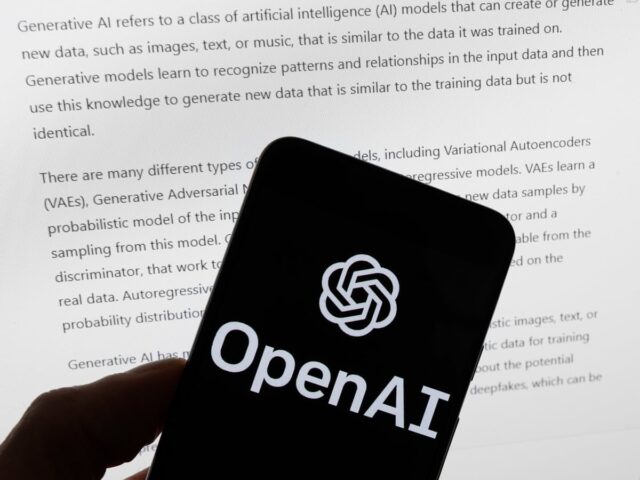
The line between human and machine-generated content is blurring, making it challenging to distinguish one from the other.
Understanding how to identify AI-generated text is crucial for readers and content creators alike.
Also, there is a simple solution like chatgpt detector.
Here are some tips to help you spot AI-generated text and ensure you know what you are reading.
1. Repetitive Patterns and Phrasing
AI-generated text often exhibits repetitive patterns and phrasing. This can be due to the limitations in the AI’s training data or its programming to follow specific algorithms. When you notice sentences that repeat similar structures or use the same words frequently, it might be a sign of AI involvement.
Humans tend to vary their sentence structures and word choices more naturally. AI-generated content might follow a rigid structure, making it feel monotonous or overly formulaic.
2. Lack of Deep Understanding

AI can generate text that appears knowledgeable but lacks deep understanding. This becomes evident when the content fails to provide detailed insights or nuanced perspectives.
AI often compiles information from various sources without truly understanding the context. If the text seems shallow or overly generic, it could be AI-generated. Human writers draw on personal experiences and insights, providing depth and context that AI often misses.
3. Unnatural Language Use
AI might struggle with idiomatic expressions, humor, and cultural references. Human writers use idioms, slang, and cultural references naturally, adding depth and relatability to their writing.
AI-generated text can sound overly formal or awkward when attempting to mimic these elements. Look for inconsistencies in tone and style that suggest an unnatural use of language. AI often relies on a vast array of data, but it can’t always grasp the subtleties and nuances of human language.
4. Predictable Responses

AI models are trained to generate likely responses based on input data. This can lead to predictable or formulaic responses that lack originality. Human writers bring creativity and personal experiences to their work, resulting in unique and unexpected perspectives.
If the content feels too predictable, it may be AI-generated. Predictability in responses is a hallmark of machine-generated text, as AI tends to stick to safe and common patterns.
5. Overuse of Certain Keywords
AI-generated text often includes an overuse of specific keywords to optimize for search engines. This can result in content that feels forced or unnatural. While SEO is important, human writers balance keyword usage with readability and flow.
Excessive keyword repetition is a red flag for AI-generated content. Keyword stuffing, a technique often used by AI to rank higher in search results, can make the content difficult to read and less engaging.
6. Lack of Personal Anecdotes

Human writers frequently incorporate personal anecdotes and experiences to illustrate points and engage readers. AI lacks personal experiences and cannot provide genuine anecdotes.
If the content is devoid of personal stories or examples, it could indicate AI authorship. Personal anecdotes add a human touch, making the content more relatable and engaging for the reader.
7. Consistent Tone and Style
While maintaining a consistent tone and style is important, AI-generated text can take this to an extreme. Human writers naturally vary their tone and style to match different parts of an article.
If the tone and style remain uniformly consistent throughout, it might be a sign of AI generation. Human writers adapt their tone based on the subject matter, audience, and context, adding variety to their writing.
8. Errors and Inconsistencies

Although AI-generated text can be highly accurate, it is not immune to errors and inconsistencies. Pay attention to factual inaccuracies, logical inconsistencies, or contradictory statements.
These issues can arise from the AI’s reliance on imperfect training data or its inability to fully understand the context. Human writers, while also prone to errors, often catch and correct inconsistencies through their understanding and intuition.
9. Overly Formal Language
AI-generated text often uses overly formal language, even when the topic does not warrant it. This can make the content feel stiff or detached. Human writers adjust their language based on the subject matter and intended audience, resulting in a more natural and engaging tone.
Overly formal language can make the content seem less approachable and harder to connect with on a personal level.
10. Limited Emotional Depth
Human writing conveys emotions and empathy, creating a connection with readers. AI-generated text may struggle to convey emotions authentically, resulting in content that feels cold or impersonal. Look for the presence or absence of emotional depth to gauge whether the text is AI-generated. Emotional depth is a key component of human writing, making the content resonate more deeply with the reader.
11. Identifying Sources and Citations

Human writers typically cite sources and provide references to support their claims. AI-generated text might include references, but these are often inconsistently formatted or lack proper citations.
Check the quality and consistency of sources to determine if the content is AI-generated. Proper sourcing and citations are indicators of thorough research and attention to detail, characteristics more commonly found in human writing.
12. Keyword Stuffing
AI-generated content aimed at SEO often includes keyword stuffing, where the same keywords are repeated unnaturally. This practice can make the text hard to read and less informative.
Human writers focus on delivering value to the reader, balancing SEO with content quality. Keyword stuffing not only hampers readability but also reduces the overall quality of the content.
13. Lack of Coherent Argument
Human writers build coherent arguments, connecting ideas logically. AI-generated text might present disjointed ideas without a clear progression. If the content lacks a coherent argument or seems to jump between unrelated points, it could be AI-generated.
Coherence in argumentation is a hallmark of human writing, reflecting the writer’s ability to think critically and present ideas logically.
15. Recognizing AI Signatures

Finally, recognizing AI signatures involves understanding the common traits of AI-generated text. By familiarizing yourself with these traits, you can more easily identify AI-generated content.
Practice reading both human and AI-generated texts to develop a keen eye for distinguishing between the two. Recognizing AI signatures can help you become a more discerning reader, able to identify subtle cues that indicate machine-generated content.
Conclusion
As AI technology advances, distinguishing between human and AI-generated text will become increasingly challenging.
However, by paying attention to patterns, depth of understanding, language use, and other factors, you can better identify AI-generated content.
Staying informed and critical in your reading habits will help you navigate the growing presence of AI in the content landscape.









